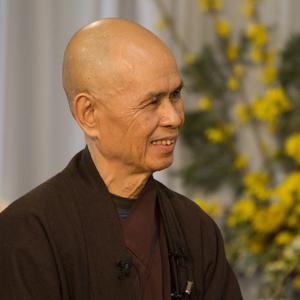
Thich Nhat Hanh Dharma Talks
Kenley Neufeld
Dharma offered by the Venerable Zen Master Thich Nhat Hanh.
- 11 minutes 27 secondsLive Happily in the Present Moment
This 59-minute talk was given on May 13, 2004 in New Hamlet, Plum Village, France. The talk was given between retreats to the monastic community and a small number of lay residents and guests.
Thank you to Chân Phúc H?i for writing the summary and providing a time-stamped transcript.
- Thay begins this talk with a description of the concept of Apranihita or aimlessness. Our tendency is to be constantly running, constantly searching. We need to stop and reestablish ourselves in the here and now.
- Walking meditation is a wonderful way to learn how to stop. Can we walk with freedom and happiness?
- The Buddha said it was possible to live happily in the here and now. In the sutra given to the White Clad People (Upasaka Sutra) “live happily in the here and now” occurs five times.
- The first time our planet was seen from space we were made aware of what a beautiful and precious place the Earth is. The Earth is the bastion of life. It is a real paradise. The pure land is right here.
- What are you searching for? Are you looking for love, for freedom, for understanding? We need to get in touch with the wonders of life. Our practice is to get in touch. Mindfulness is a very concrete way to go home to the here and now.
- Having a sangha is of great benefit. In a sangha we remind each other that it is fortunate to be alive. If we know how to stop running, how to take care of ourselves, how to water seeds of happiness every day, we can transform our suffering. Doing this together is wonderful.
- Thay tells a story about visiting a prison. Even in prison a person can be free. And even outside of prison a person can be a prisoner of anger, despair, and hate.
- Freedom is freedom from fear, from anger, from forgetfulness. And our practice is the practice of freedom. Our practice is the practice of awakening.
- The twenty-four brand new hours given to us every morning are a precious gift. The day when we lay down to die we cannot bargain for another day. Today is available, and if we are lucky, tomorrow will also be available.
7 February 2021, 5:49 pm - 1 hour 17 minutesHow do we Practice as a Sangha
2000-06-03 (77-minutes) – It’s been a long while since posting a dharma talk for you all, and for that I apologize. Today for our Day of Mindfulness at Deer Park Monastery, we heard this talk from June 3, 2000 at New Hamlet, Plum Village. The talk is part of the 21-Day Retreat that year with the theme of Eyes of the Buddha.
For this talk, we take a deep dive into what it means to be sangha. Some of what Thay shares is for the monastic sangha, but can be equally applied to a lay community. Right out front, Thay says the very minimum number for a sangha is four people. He then proceeds to outline the steps for the Sanghakarman Procedure.
From this presentation, the rest of the talk focuses on the Six Togethernesses. A real sangha must practice all six.
- Body. Being physically present in one place.
- Mindfulness Trainings
- Sharing. Dharma discussion. Nonverbal action. Presence. (View, insight, understanding, wisdom)
- Speech. Loving speech. Calm and gentle.
- Material resources are shared equally
- Happy and joyful. Synthesis of all ideas.
Toward the end, Thay explains the difference between the core sangha and the extended sangha.
I hope you enjoy the talk.
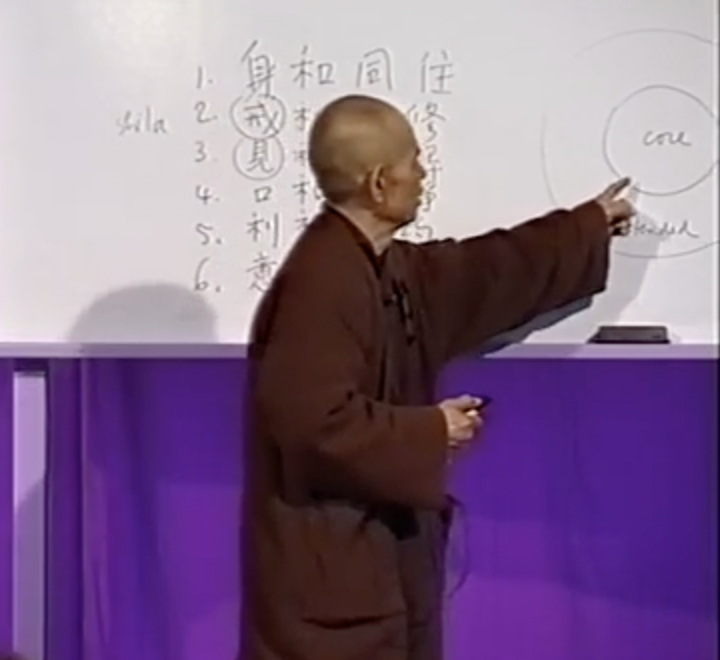 21 January 2021, 10:15 pm
21 January 2021, 10:15 pm - 1 hour 55 minutesMaking Peace with Ourselves
The date is November 25, 2001 at Plum Village, Upper Hamlet. This is the first talk of the 3-month winter retreat. The talk is offered in English.
00:00 Connecting with Green Mountain Dharma Center and Deer Park Monastery
09:10 Chanting
34:12 Going Home to Ourselves
41:08 Drinking our Tea
43:22 Mindfulness of our Body
46:04 Body
52:50 Feelings
56:26 Perceptions
1:01:38 Mental Formations
1:05:14 Consciousness
1:06:01 Reclaiming Our Sovereignty
1:14:01 The Sangha
1:17:58 The Energy of Mindfulness
1:24:55 Healing from Within
1:29:04 Looking Deeply
1:37:53 Building a SanghaWhat is the 3-month retreat? How do we practice together? Our practice is to build brotherhood. How do we know if we are succeeding in our practice? To practice to be happy together. It is a kind of daily food. Through our sitting mediation, walking meditation, eating in mindfulness. These help build our sisterhood and brotherhood. This is done by building peace within ourselves so it can manifest around us.
The Energy of Mindfulness
Buddhist meditation has a universal value. The energy of mindfulness help us to there, to be fully present in every moment of our daily life. To be there for us. Our body, our feelings, our perceptions – they are all there, but are we taking care of them? Our practice is to go home to ourselves and tend to our feelings, perceptions, and our body. Our tendency is to run away from ourselves.
Drinking our tea. Are we fully present to drink our tea? Or are you drinking like a machine? Mindfulness of drinking. Everyone can do that. If we are not careful, we may follow our habit. Mindfulness is the energy to be there for what is going on. Through breathing, walking, eating, etc.
Mindfulness is the kind of energy that helps you to be fully there. This is the first action for peace. Have you abandoned yourself? Mindfulness can help you come back to yourself. We start with our body. Your breath is part of your body. When you breathe in, bring your mind back. Mindful breathing. This is the best way to begin making peace. It is the door in which you can come back to yourself. We can restore ours sovereignty in the territory of ourselves.
The Five elements (Skandhas)
The first element is form – your physical body. Our physical body is like a river; it is always flowing. The first thing a practitioner should do is make peace with our body. Learn how to calm and renew your body. Learn the art of deep and total relaxation. Give our body a chance to rest and restore itself. It is an action of peace. In the Harvard medical school, they have studied the role of meditation in healing the body. Breathing in, I calm my body. Breathing out, I smile to my body.
The second element of your person is feeling. The painful feelings, pleasant feelings, neutral feelings. All kinds of feelings. Like the body, there is a river of feelings. They are born, remain, and affect other aspects of our person. Are you taking care of your feelings? Your emotions? Our tendency is to run away. Breathing in, I am aware of my feeling. Breathing out, I calm my feeling. They are like a suffering baby and they have been left alone. We need to take care of this territory of feelings.
The third portion of our territory is perception. We perceive realities, we have an image of ourselves. That is a perception. We have an image of the other person, or other group of people. This is a perception. And very often they are wrong. And because of our wrong perceptions, we suffer very deeply. There are a lot of contradictions.
In the Buddhist tradition, the physical body is called a formation. Formation is a technical term that means anything that manifests based on conditions. For example, a flower. Our body is formation. Our feelings are also a kind of formation, but we call it a mental formation. The fourth element is mental formations. According to Buddhist psychology, we have defined 51 mental formations. And mindfulness is one of the mental formations; we should develop our mindfulness.
The fifth domain is called consciousness. Consciousness contains all the kind of seeds that can manifest into mental formations. It is like the soil keeping all the seeds and when the rain falls then mental formations manifest.
Reclaiming Our Sovereignty
The territory of our person is very large. And if we don’t know how to bring peace into our territory, then we cannot help our brother or sister to do the same. To restore peace, it is the act of peace. And it is a collective effort. We are the king/queen that rules our territory, but we have not been very good at taking care of our territory. We have lost our sovereignty. We have to go home and rely upon our sangha to help us restore and reclaim our sovereignty. We have our in-breath and out-breath to support us in this endeavor. And when the quality of your breathing has improved, you can step into your body and channel the peace and harmony with your breathing. That is the practice.
Our society is organized in such a way that we’re encouraged to do the opposite of taking caring of ourselves. Television, magazines, etc. help us to run away from ourselves. When you don’t have anything to do, we often look for something to do. We are afraid of coming home to ourselves because we may encounter the war within ourselves. We have been running away. The buddhist practice helps us return to our kingdom without fear. With the energy of mindfulness of our sangha. We need the sangha. It is very difficult to do alone. The sangha can help us embrace our body, our feelings, our perceptions. The Buddha offers many concrete methods to restore peace and well-being.
The Energy of Mindfulness
The energy of mindfulness has several functions. The first function is to be there for yourself. To help us produce our true presence. Through mindful breathing and mindful walking. This is the basic practice of Plum Village. The second function is to recognize what is there. What is there is your body, your feeling, etc.
And the third function of mindful is to embrace. Not fighting. Just embracing. The fruit of the practice depends on the strength of your mindfulness. If you practice well, then it will be enough to embrace your pain. This can bring about relief and calming. We can create an environment that is favorable for this practice.
Healing is not really coming from outside. It can come from the inside. It is inherent in our body and consciousness. Just like an animal is injured retreats to take care of the body. If we worry too much, then we make the situation worse. We need to rest. We can believe in the capacity of our body. This can also apply to our consciousness too. Every wound can be healed. Through tenderly embracing our pain in the body and in our feelings.
The next function of mindfulness is to look deeply. Look deeply into what? Our feelings, our perceptions. To identify the roots of our pain and our suffering. Our ill-being. Looking deeply into the nature of our anger, our pain, then we can see the kind of food we are using to feed them. This is related to consumption. And practicing mindful consumption is the way out. Nothing can survive without food. To know what to consume and what not to consume. Looking deeply requires concentration. Which then gives you insight to know what to do.
Practical Example: a feeling of despair.
Building a Sangha
Thay shares of coming to the West and feeling all alone. I had to come to call for a cessation of war in Vietnam. And so he began to build a sangha to feel supported and not be alone. Building sangha is the most important task. Without a sangha, we cannot have refuge. Even if you are a teacher or a Buddha, you still need sangha. A group of people can change the course of history.
Peace and well-being always begins with yourself. Learn the methods from the sangha. Have faith in the practice. And you can feel peace and well-being. Coming together for three months is our opportunity to build brotherhood and sisterhood.
The next Buddha is Mr. Love. And will take the form of the sangha. The Five Skandhas working in harmony, that is a sangha.
6 July 2020, 6:15 pm - 43 minutes 30 secondsHappiness is Right Here
A 43-minute segment on the third door of liberation – aimlessness. The talk takes place on August 17, 2007 during the Stonehill College retreat during the U.S. Tour. The retreat theme is Mindfulness, Fearlessness, and Togetherness and this is part four of a four-part series.
Aimlessness
You don’t put something in front of you and run after. It is a wonderful practice. It can bring you peace. We have the habit of running after something. Fame. Profit. Wealth. Even enlightenment. People imagine that monastics are running after enlightenment. But that is not the practice.
If you have received the Five Mindfulness Trainings, you belong to the lineage of Linji. His teaching is very strong on this aspect of running. Don’t run after what you already are. Stop running. Happiness is right here. In this very moment. Just one step. Peace. Joy. Healing. Enlightenment. Are all in the present moment. This is the teaching of aimlessness.
Are you enlightened already? But how can we make plans for the future? The answer lies in the teaching of aimlessness.
Enlightenment is not something you strive for. The moment you are aware you are breathing in, that is a moment of enlightenment. We also practice to be aware of the present moment. We don’t live in a dream anymore. There is no way to enlightenment. Enlightenment is the way.
To be there for each other. At the breakfast table. There are things we can do so that mindfulness is there. If we organize well, breakfast can be a celebration of life.
So, let us take care of the present moment. The future is contained in the present moment. And let us not lose ourselves in regret about the past.
Nirvana
In the Buddhist tradition they speak of nirvana. Nirvana is the absence of notions. Notions like birth and death. Nirvana is not a place or space located in time. We have a notion of time. That we have birth and death.
We hear the story of the flame.
Pairs of opposites.
- Birth and death
- Being and nonbeing
- Coming and going
- Sameness and otherness
Sangha building.
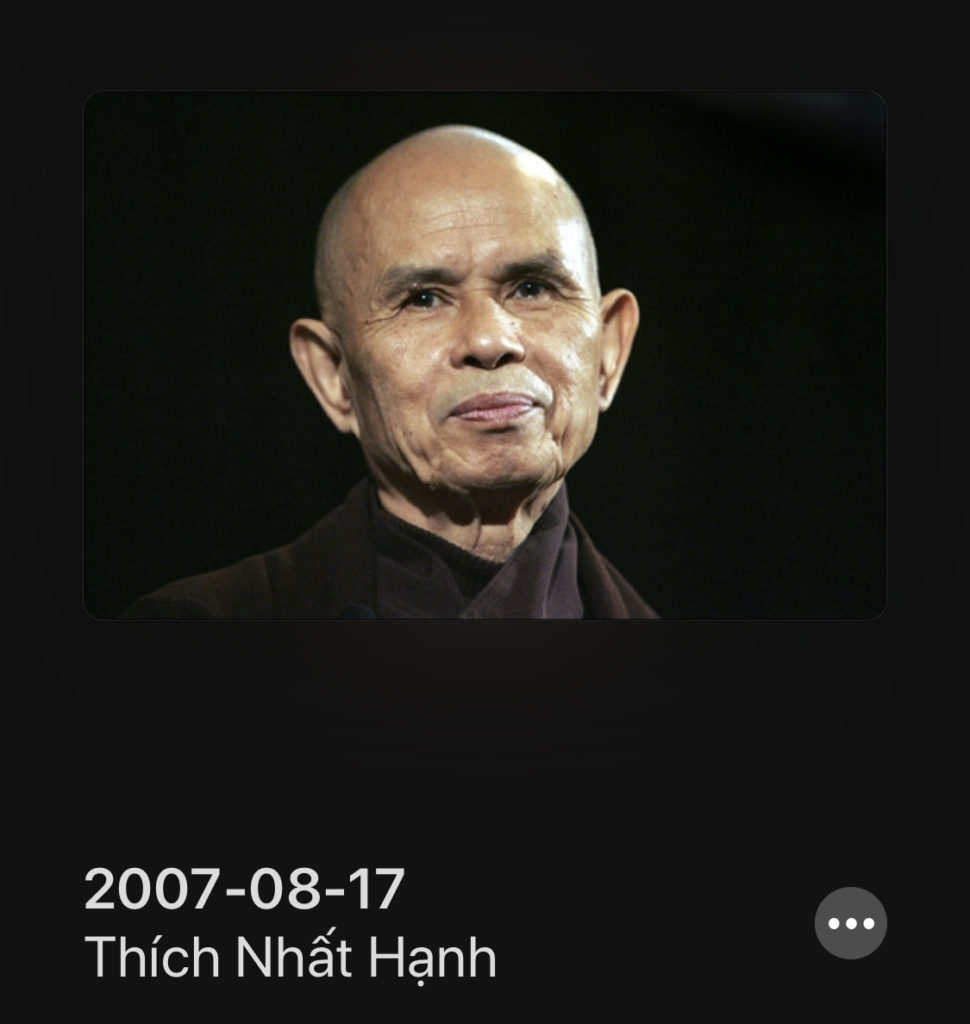 17 April 2020, 5:06 pm
17 April 2020, 5:06 pm - 13 minutes 38 secondsFalling in Love with a Cloud
A 13-minute segment on the second door of liberation – signlessness. The talk takes place on August 17, 2007 during the Stonehill College retreat during the U.S. Tour. The retreat theme is Mindfulness, Fearlessness, and Togetherness and this is part three of a four-part series.
Signlessness
The second door of liberation. Sign here is the appearance. When we look deeply we have to see the nature of signlessness. The seed of corn has an appearance, we see it as a seed of corn. But when it grows, it no longer appears as a seed of corn. But the seed of corn is still there; it’s only changed how it appears.
Say you fall in love with a cloud. Thay helps us smile by recognizing our beloved cloud. It has not died. A cloud never dies. This too has been confirmed by scientists.
Piece of paper. Can you establish the birthdate of this sheet of paper? Was it at the paper mill? But the paper hasn’t come from nothing. Even if we burn the sheet of paper, it will continue. Being and non-being are just ideas. They do not apply to reality. These are conventional designations.
More examples. A drop of water falls from the sky. What happens? Does it become nothing? Before you were born. Were you there? Did you exist before the moment of conception? It is all a continuation. The same applies to “so called” death.
In the moment of great despair, great anguish, signlessness is there to rescue you.
 15 April 2020, 9:50 pm
15 April 2020, 9:50 pm - 38 minutes 21 secondsThe Raft is not the Shore
A 38-minute segment on the first door of liberation – emptiness. The talk takes place on August 17, 2007 during the Stonehill College retreat during the U.S. Tour. The retreat theme is Mindfulness, Fearlessness, and Togetherness and this is part two of a four-part series.
Three Doors of Liberation
Today we are going to talk about the Three Doors of Liberation. In several discourses reminds us his teachings are only a device to help us liberate ourselves. They are not absolute truth. They are like a raft helping us to the other shore. The raft is not the shore. Make use of the raft. It is also like a finger pointing to the moon. It is not the finger. The finger is only a means to help us see the moon. Don’t be caught by the dharma of the Buddha. We can practice being non-dogmatic.
The Three Doors of Liberation are like the finger or the raft. These three doors are in all schools of Buddhism. We can use any door to help us get out of suffering. The practice is to have real insight.
Everything is impermanent. Intellectually we know this. But the notion of impermanence alone will not help us. We need to understand the truth of impermanence. We hear an example of our relationship with a loved one. We need to look deeply to see the true nature of impermanence. The insight will help us to behave wisely. Impermanence makes life possible. It gives us a chance to heal.
Concentration is to focus your attention on one thing deeply. To see the nature of that thing. It could be your love, you hate, your depression, your fear. To discover the true nature of what is there.
It can also be the guide offered by the Buddha. To see the true nature of things. This can be liberating.
The Three Doors of Liberation have also been called the three concentrations.
Emptiness
The first door of liberation. Emptiness has to do with our suffering and our happiness. We can get out of our suffering through the door of emptiness. It does not mean non-being. Thay teaches us what emptiness means.
Empty of what? The glass. The flower. Is there a separate existence? Thay offers several examples of emptiness ranging from parent/child, seed/corn, and cells.
When we touch the true nature of emptiness, we transcend all fear, all discrimination, all suffering. Let’s be less busy in our daily life so we can touch this truth. But remember, it is only a device. Striking a match to get a flame. Making use of the match. The fire is what I need for my liberation. I don’t need the match. A concept. We live each day in a way so we can touch the nature of emptiness.
 13 April 2020, 4:21 pm
13 April 2020, 4:21 pm - 15 minutes 42 secondsThe Wisdom of Nondiscrimination
A 15-minute segment on the Wisdom of Nondiscrimination. The talk takes place on August 17, 2007 during the Stonehill College retreat during the U.S. Tour. The retreat theme is Mindfulness, Fearlessness, and Togetherness and this is part one of a four-part series.
The Wisdom of Nondiscrimination
Togetherness is not possible without a kind of wisdom. The wisdom of non-discrimination. The practice of looking deeply helps remove our discrimination.
Teaching on the umbilical cord. The art of being an expecting mother. Everything you do as a expecting mother, you do for your child. And the father is there to support. Even after the umbilical cord is cut, you are still linked very deeply with your parents. Even if we think are different person as we grow older. This is discrimination. And looking deeply we see are still linked. Non-discrimination.
Teaching on Thay’s right hand. There is no inferiority and superiority between the two hands. Writing a poem. Hammering a nail. This is the wisdom of non-discrimination. Low self-esteem (inferiority) and high self-esteem (superiority). And even equality. In Buddhism, these three complexes are also a symptom of discrimination. If we have the wisdom of non-discrimination then we will not suffer. We inter-are.
 12 April 2020, 12:19 am
12 April 2020, 12:19 am - 8 minutes 3 secondsMisunderstanding and Fear
We continue our series of posts with questions and answers. In this eleventh post, we hear a question on the theme of spiritual leaders being killed.
- Jesus, Martin Luther King and Gandhi were all killed and I know that you were exiled from Vietnam. Why do bad things happen to spiritual people?
The session takes place on August 16, 2007 during the Stonehill College retreat during the U.S. Tour. The retreat theme is Mindfulness, Fearlessness, and Togetherness.
16 March 2020, 10:53 pm - 13 minutes 31 secondsSexual Abuse at the Family Level
We continue our series of posts with questions and answers. In this tenth post, we hear questions on the theme of sexual abuse in families.
- Earlier we had a question about transforming suffering from sexual misconduct at a community level. Now we have a question from several people about transforming this at an individual level and the family level. One person shared about being abused as a child and now as an adult, what can I do to help heal this scared little child who feels like the past is the present. Another person shared about sexual abuse in their family and I’m afraid for a new baby’s safety in our family.
The session takes place on August 16, 2007 during the Stonehill College retreat during the U.S. Tour. The retreat theme is Mindfulness, Fearlessness, and Togetherness.
15 March 2020, 4:52 pm - 10 minutes 47 secondsWorking with Judgment and Fear
We continue our series of posts with questions and answers. In this ninth post, we hear two questions.
 Photo copyright Plum Village Community of Engaged Buddhism.
Photo copyright Plum Village Community of Engaged Buddhism.
- Two years ago I was here extremely depressed and anxious. You said, people feel the storm of the mind when experiencing depression. For now that storm has subsided. I now have fear about losing my mother, and people in my family, and how can I transform this fear?
- Thank you for your light. Often times I struggle with judging, and I think I’m getting better, but when I do judge people I am happy to be proven wrong. The challenge is when I judge other people for being judgmental. How can I overcome this type of judging judging?
The session takes place on August 16, 2007 during the Stonehill College retreat during the U.S. Tour. The retreat theme is Mindfulness, Fearlessness, and Togetherness.
12 March 2020, 6:16 pm - 8 minutes 45 secondsChronic Depression and MedicationsWe continue our series of posts with questions and answers. In this eighth post, we hear one question. Many of us experience chronic depression. Earlier in the retreat you talked about what is feeding that depression. For me, there is also an underlying biochemical component. Do you think I should not need medication and heal from the practice only? The session takes place on August 16, 2007 during the Stonehill College retreat during the U.S. Tour. The retreat theme is Mindfulness, Fearlessness, and Togetherness.8 March 2020, 10:43 pm
- More Episodes? Get the App
- https://tnhaudio.org
- en-US
Your feedback is valuable to us. Should you encounter any bugs, glitches, lack of functionality or other problems, please email us on [email protected] or join Moon.FM Telegram Group where you can talk directly to the dev team who are happy to answer any queries.
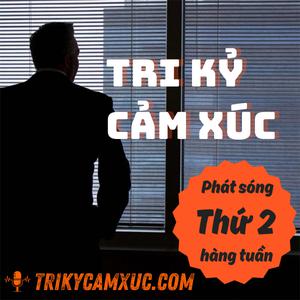 Tri Kỷ Cảm Xúc
Tri Kỷ Cảm Xúc
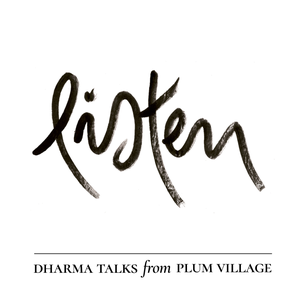 Listen
Listen
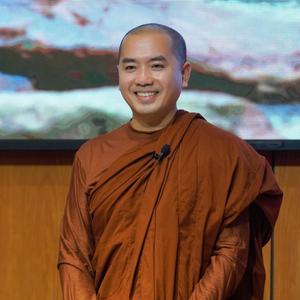 Minh Niệm
Minh Niệm
 HIEU.TV
HIEU.TV
 The Way Out Is In
The Way Out Is In
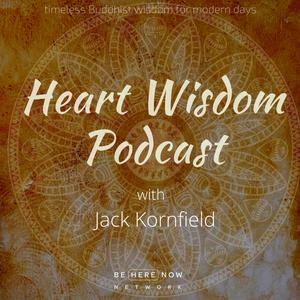 Heart Wisdom with Jack Kornfield
Heart Wisdom with Jack Kornfield